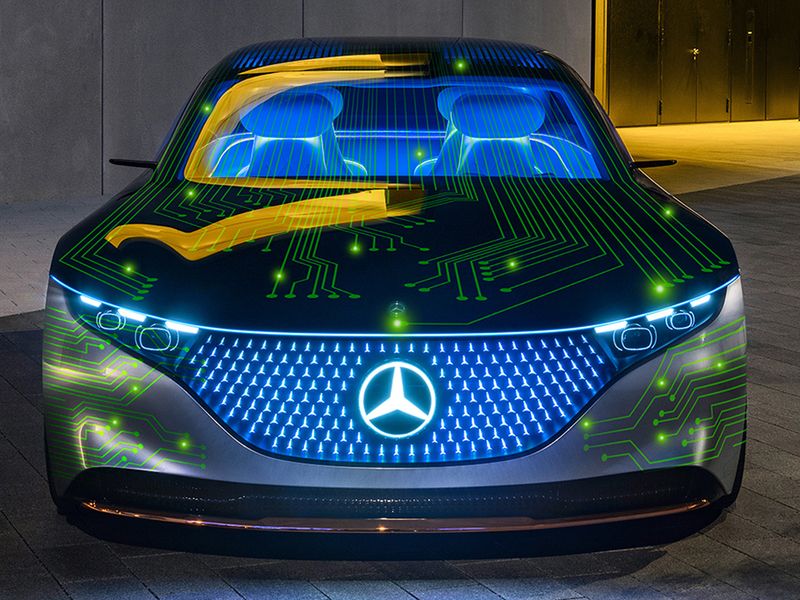
Mercedes-Benz and Nvidia are working to enable advanced technology features that can be continuously updated over the air across Mercedes’ entire lineup beginning in 2024 — effectively ensuring vehicles won’t be rendered obsolete as new advancements hit the market.
The Silicon Valley chipmaker and the German automaker announced Tuesday that they are developing a “software-defined“ vehicle system that will enable updates for automated driving features and other safety and convenience applications.
They will deploy the system using Nvidia’s Drive platform.
The platform includes a full computing system for automated driving applications, which will allow Nvidia and Mercedes-Benz to jointly develop Level 2 and Level 3 automated vehicle applications and automated parking functions, up to Level 4 autonomy.
The companies did not further detail which functions the technology will enable. Typical Level 2 and 3 systems run the gamut from automatic emergency braking to hands-free highway driving. Level 4 technology enables full self-driving within pre-mapped areas.
In an event streamed Tuesday out of Santa Clara, Calif., and Stuttgart, Germany, Nvidia CEO Jensen Huang said that, “the definition of the car is going to change forever.”
“This partnership breaks ground in several different fronts. Of course, the first front is the technology,” Huang said. “The second part is that the entire product is going to be designed differently.”
The system, which will come standard on Mercedes-Benz vehicles, will change the experience for customers throughout the life of the vehicle, said Danny Shapiro, senior director of automotive at Nvidia, during a media briefing Monday.
“That shift to a software-defined platform is transformative and enables all of these systems to continually be enhanced,” Shapiro said.
Customers will be able to purchase and add capabilities, software applications and subscription services through over-the-air updates.
Second or third owners will be able to update the vehicle with new functions, even if the original buyer did not purchase them.
Shapiro likened the ability to update the vehicle to what consumers experience with smartphones and said this will “be the most advanced computing platform in the entire auto industry.”
“We’re bringing the car up to the standard that has already been pioneered for the iPhone,” Shapiro said. “People will see value in this. People are spending after the fact for software updates, and they will continue to do that when they see value.”
The news comes just days after Mercedes and rival BMW ended their alliance to develop highly automated driving functions to enable “hands-off” autonomous driving. The partnership had been announced only last year.
Ola Kallenius, CEO of Mercedes parent Daimler, said the timing for development of these technologies between the two automakers was not lining up. The Nvidia platform allows Mercedes to update its system earlier than the BMW partnership might have allowed, though the partnership may return later.
Though Kallenius said he does not comment on competitors when asked about how this system differs from that of Tesla, he said: “We see the opportunity here now to grow, and with this partnership, it’s like we’re taking the ultimate step.”
“What we see is that the transformation will be huge. The next generation of vehicles … are, of course, going electric, automated, [have] autonomous features, but software upgradability is huge,” Shapiro said. “We’re creating, essentially, a perpetually upgradable machine.”